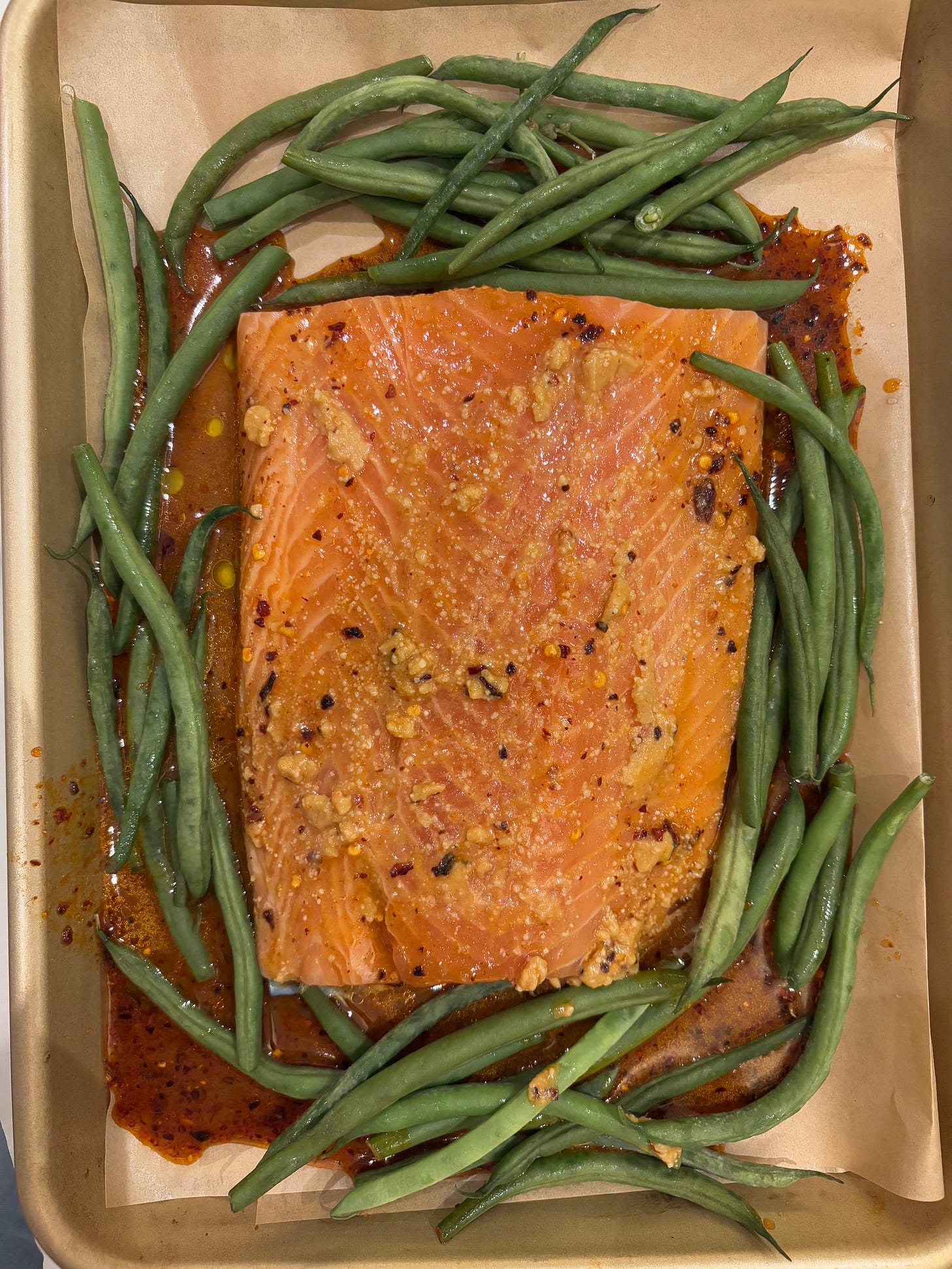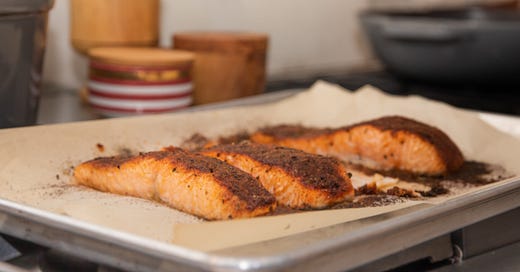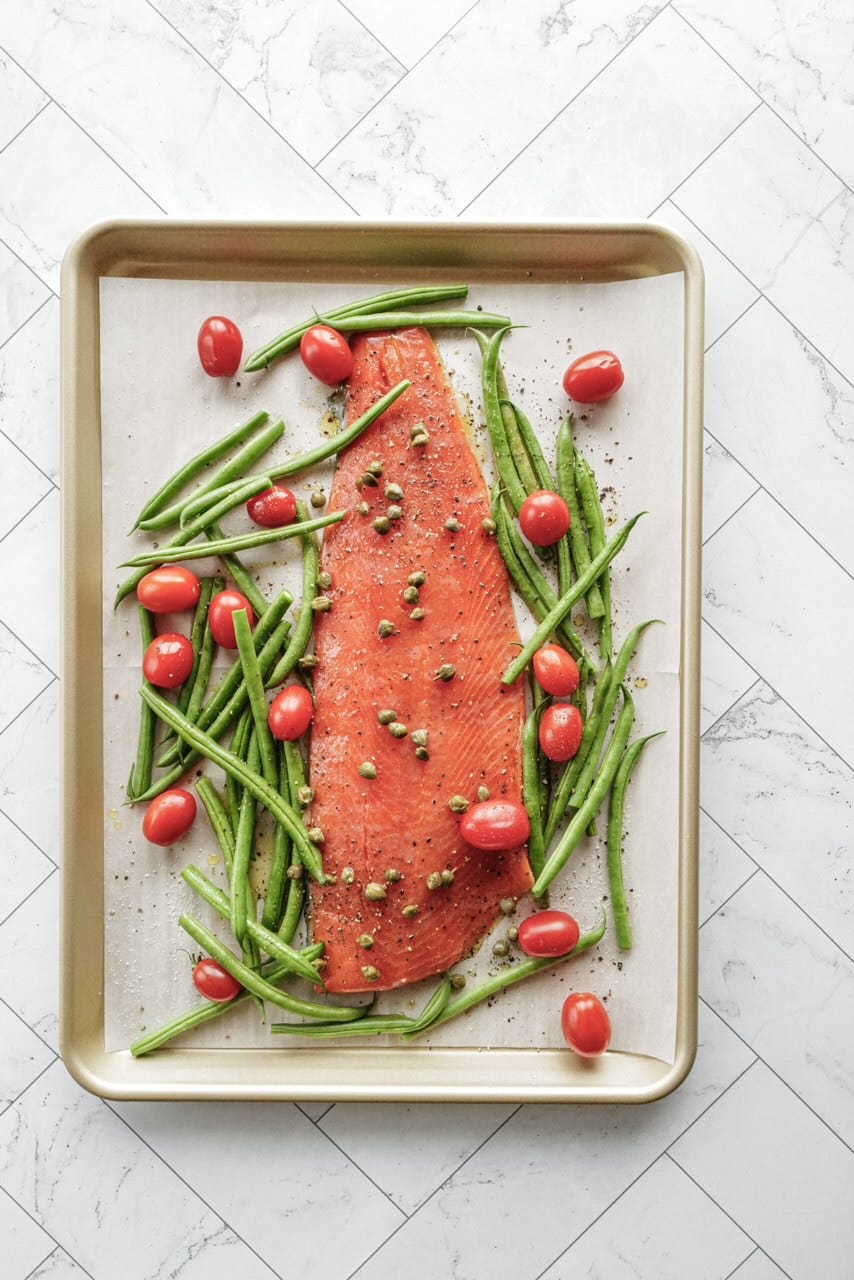Za'atar Salmon, Gochujang-Miso Salmon, Cedar Plank Salmon, Honey Harissa Salmon and more
Some of the many ways I cook America's favorite fish and how to source it sustainably
Maybe you overindulged on Valentine’s Day and need a healthy dinner in your weekend plans, or maybe you just need a delicious weeknight staple. Salmon is sort of the gateway fish. Some people in my cooking classes say they don’t like it, but then they love it once they taste it prepared properly (i.e., not overcooked) with delicious marinades, rubs, or seasonings. It’s a fish we cook and teach often because it’s readily available and a fan favorite.

Too much of a good thing isn’t always a good thing, though. It can be confusing when you walk up to the fish counter and there are six different types of salmon. It gets overwhelming. Yes, as consumers, it’s nice to have choices, but it can hurt your brain. Here’s the deal: Salmon has a season, so if you’re buying it this time of year, it was either flash-frozen or farmed. Chinook (King) salmon runs from April to August, with the peak season for wild salmon running for a few weeks in summer. Don’t be afraid of pre-frozen salmon; you can find decent frozen wild salmon, but it’s nearly impossible to find the wild King salmon filets that we can see in summer.
My issue is I know that wild salmon is better for the planet and for us in so many ways, but when we’re not in peak season and King Salmon isn’t available, my kids prefer the fatty flavor of Atlantic salmon over ultra-lean Copper River sockeye salmon. So if I’m not buying those thin, dark orange, ultra-lean pieces of Copper River sockeye salmon (which I often do), I look for the best option in a responsibly raised Atlantic salmon. I use the Monterey Bay Aquarium’s Seafood Watch as my guide. In the early 2000s, when I was a food writer in San Francisco for Sunset, Cooking Light, and others, I was invited to the Monterey Bay Aquarium Seafood Watch program with a group of food journalists, and I’ve forever been a fan. Their online resources are the best for determining what to buy when the fish counter seems overwhelming. I can’t give you a hard and fast recommendation for the type of farmed fish to look for because I don’t know what’s available where you shop. Buy fish at a market with a lot of turnover and shopper traffic, and have a conversation with whoever is working the fish counter. Here are the suggestions for purchasing farmed salmon from Seafood Watch. Keep in mind that all Atlantic salmon is farmed, but here are the types that are the best options to buy:
Atlantic salmon farmed in Maine, U.S.
Atlantic salmon farmed in the Faroe Islands, Denmark
Atlantic salmon certified by the Aquaculture Stewardship Council (ASC)
Atlantic salmon from Nova Scotia, Canada
Atlantic salmon from Orkney Islands, Scotland
Magallanes region (Region 12) in Chile (this is getting really confusing and niche!)
Production Areas 1, 12, or 13 in Norway (who would know?!)
If that information seems overwhelming, I always tell people in cooking classes that the type of fish in a recipe is negotiable. You can use whatever kind you like, except for tilapia. Never use tilapia! If you’re wondering why, just google “Tilapia farms” and watch one of the videos. I hope your gag reflex isn’t strong. But if you don’t see one of the sustainable options mentioned above, try a different fish. Variety is the spice of life! Use your favorite fish in the recipes I’ve shared today. Try Arctic char, trout, haddock, or wild Alaskan cod.
Below, you’ll find six different salmon recipes we use on repeat in classes, plus my version of homemade za’atar. I also have an online course all about cooking fish called Fearless Fish with over 30 fish recipes. You can get all the details on my cooking school site or the Fearless Fish class page. Or head to my Recipe Index for more fish recipes.
Keep reading with a 7-day free trial
Subscribe to Smart in the Kitchen to keep reading this post and get 7 days of free access to the full post archives.





